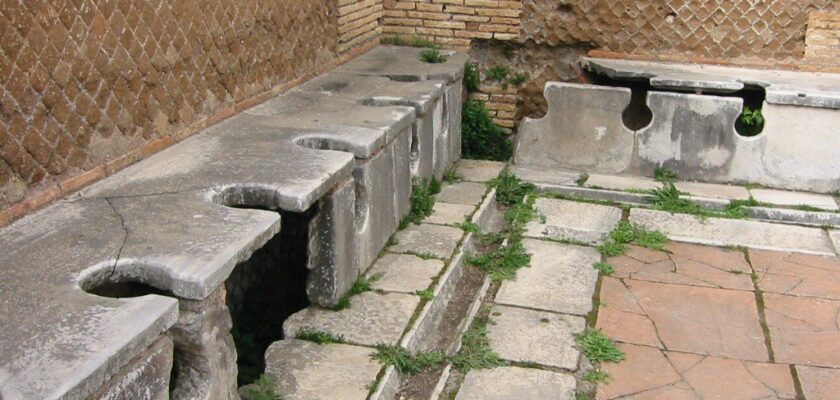Ostia Antica
Ostia Antica is a 20-minute train ride from Rome. Archaeological excavations here have uncovered more details of ancient Roman life than in any other city. The ruins are beautifully preserved – right down to the streets with two-story houses. There are no traces of the interference of modern civilization here. Ostia is the perfect place to feel like a citizen of ancient Rome.
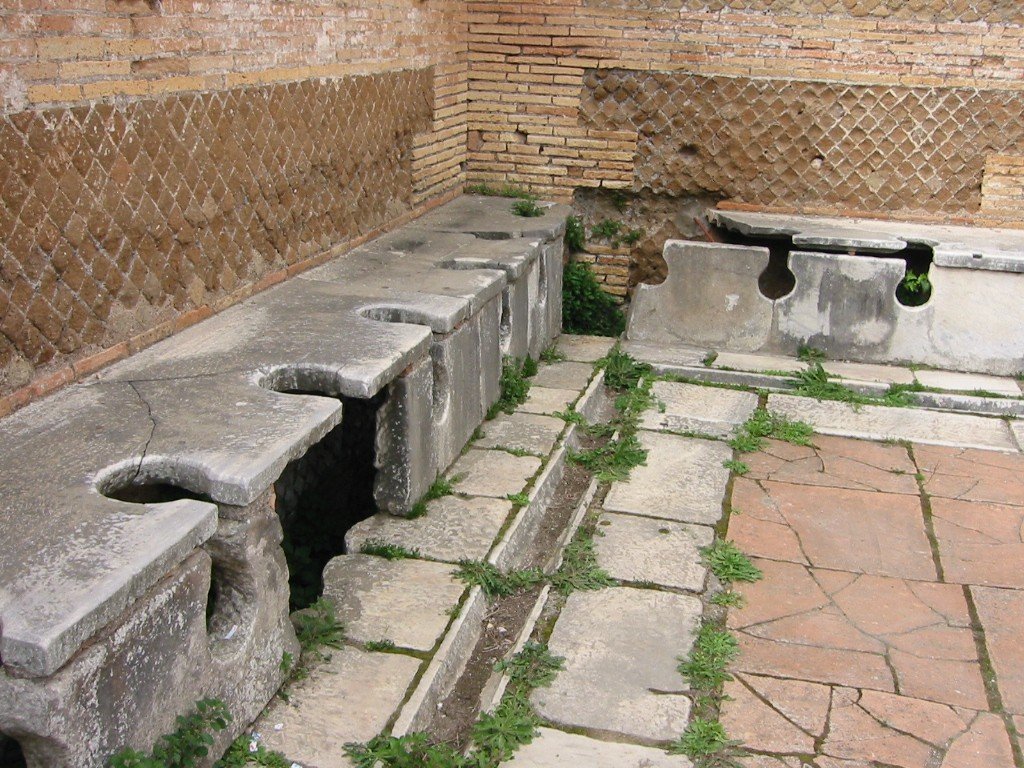
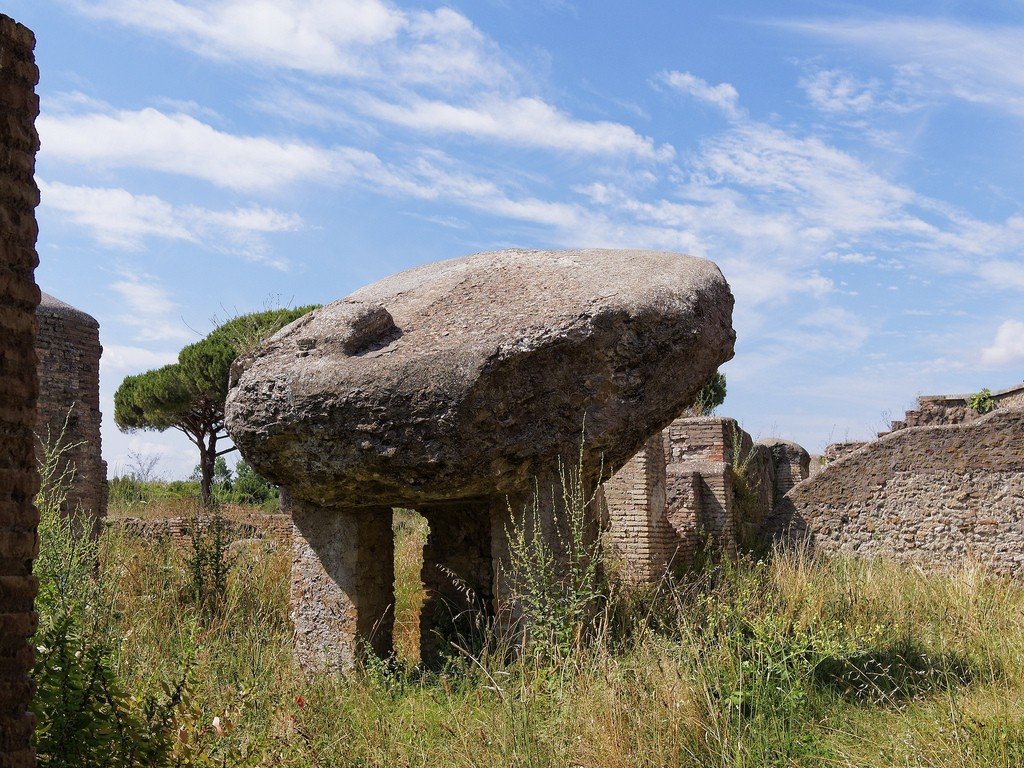
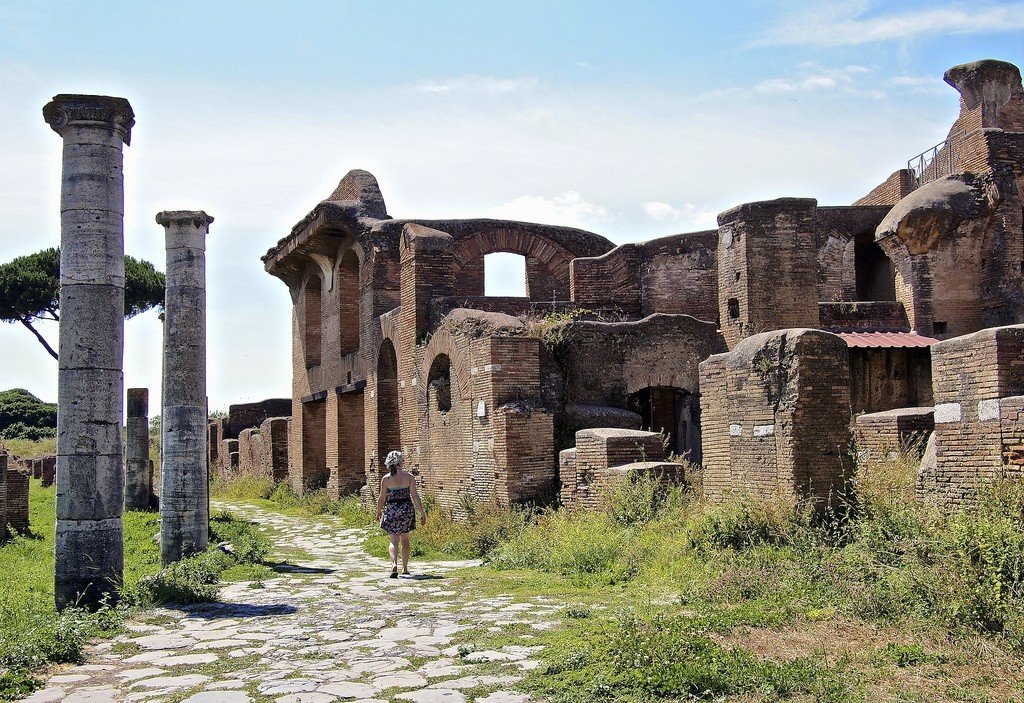
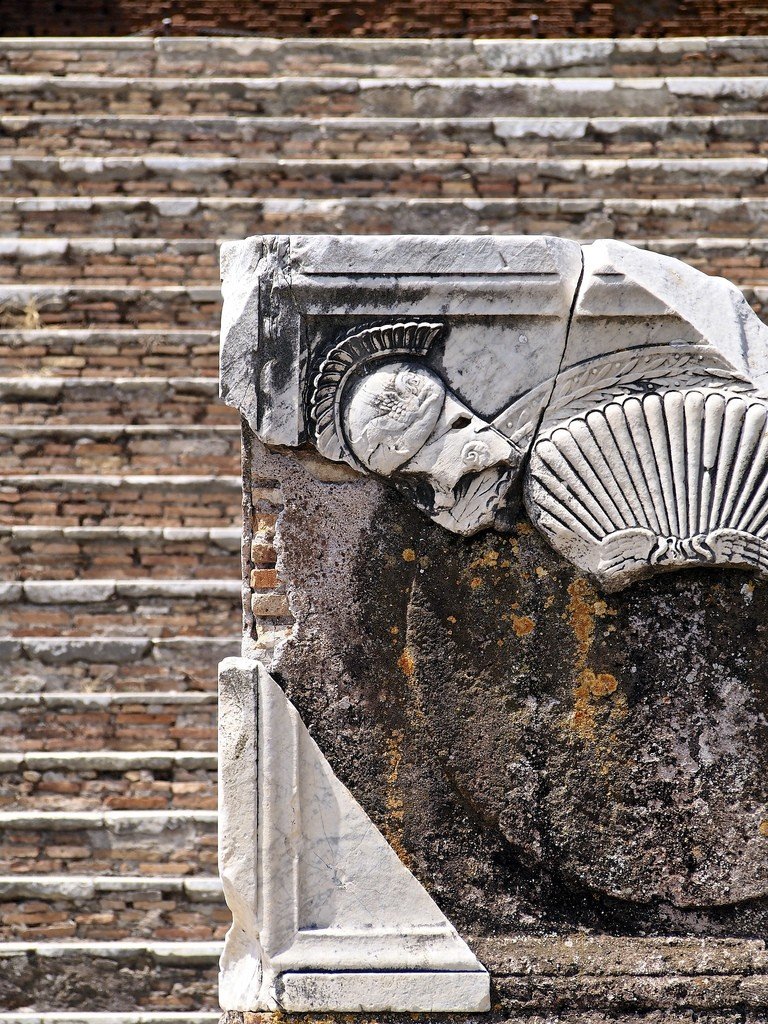
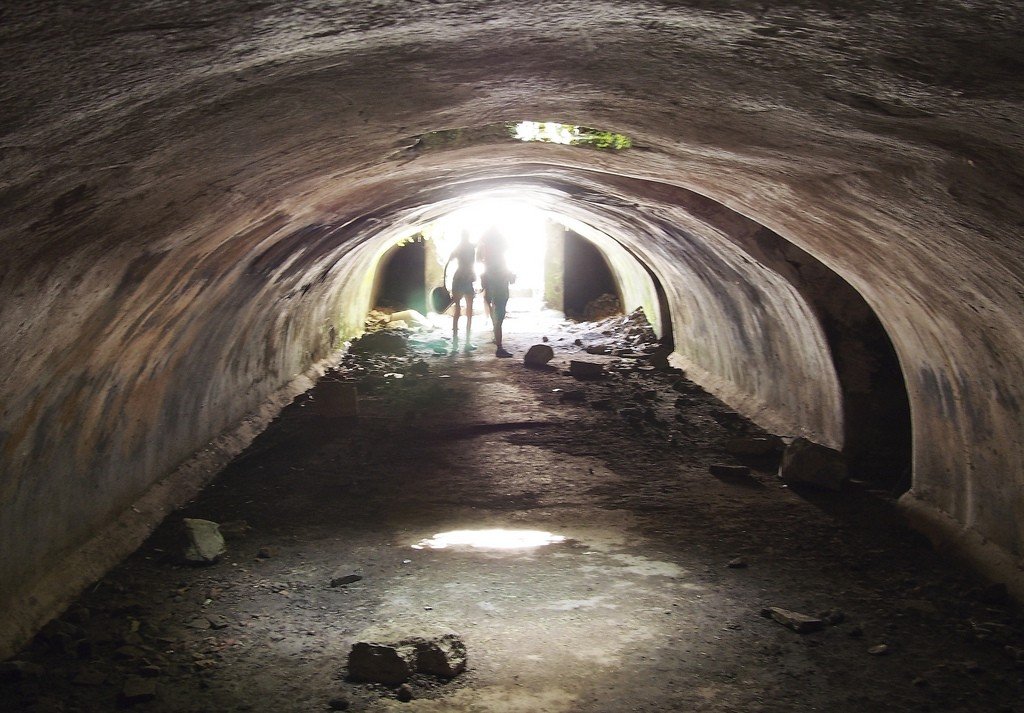
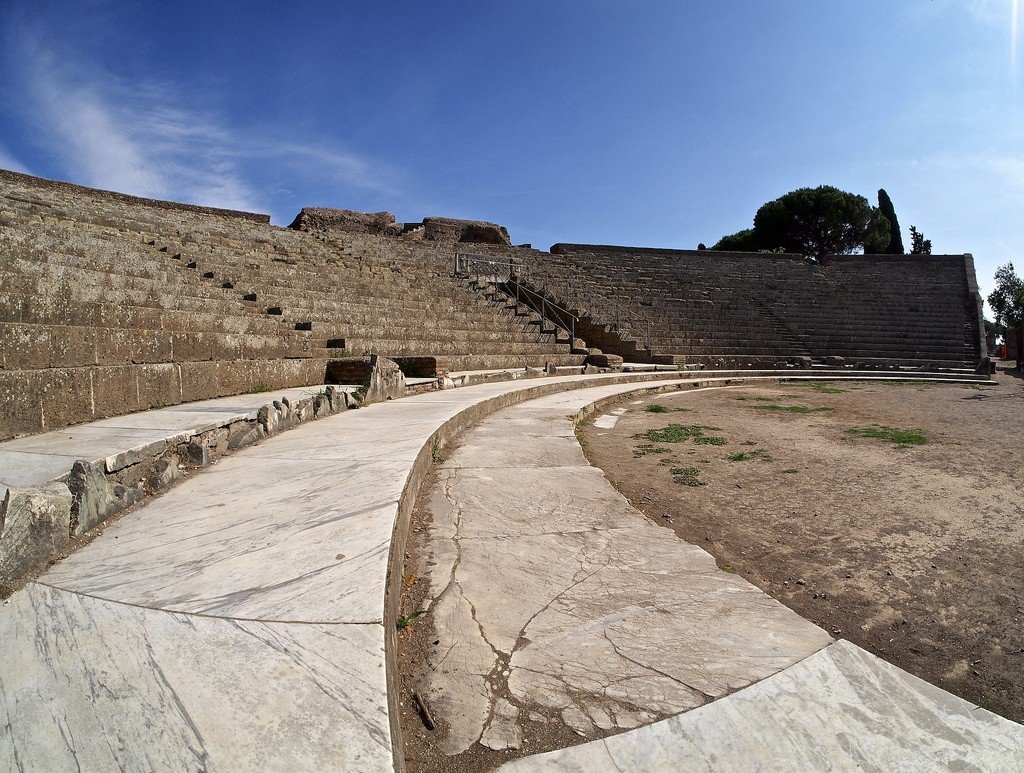
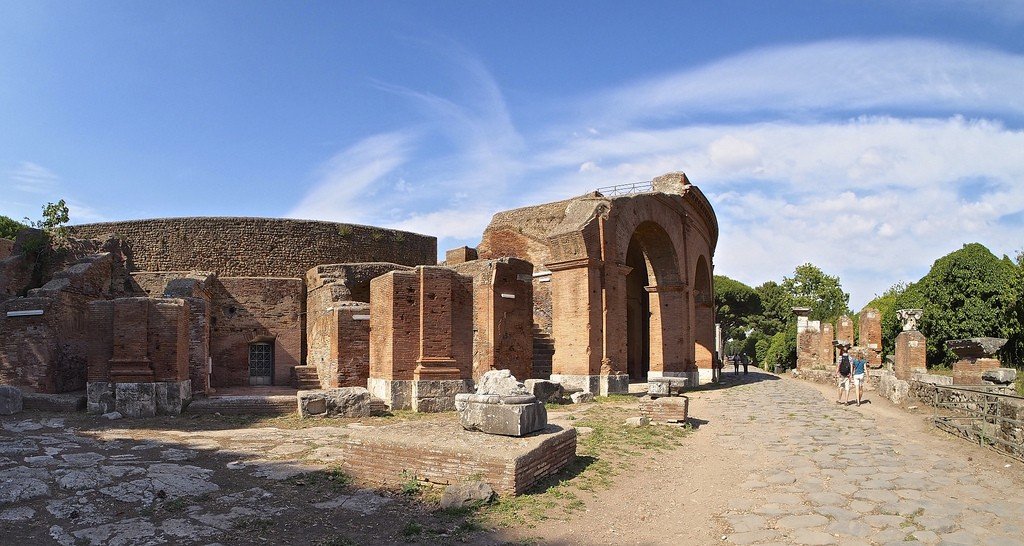
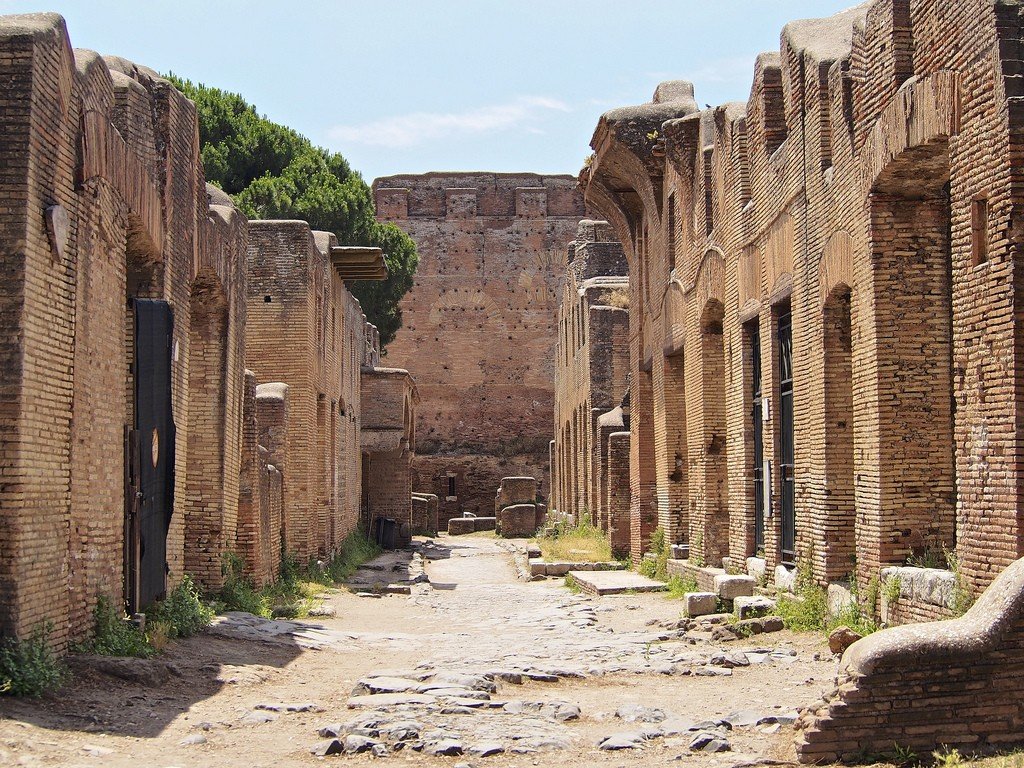
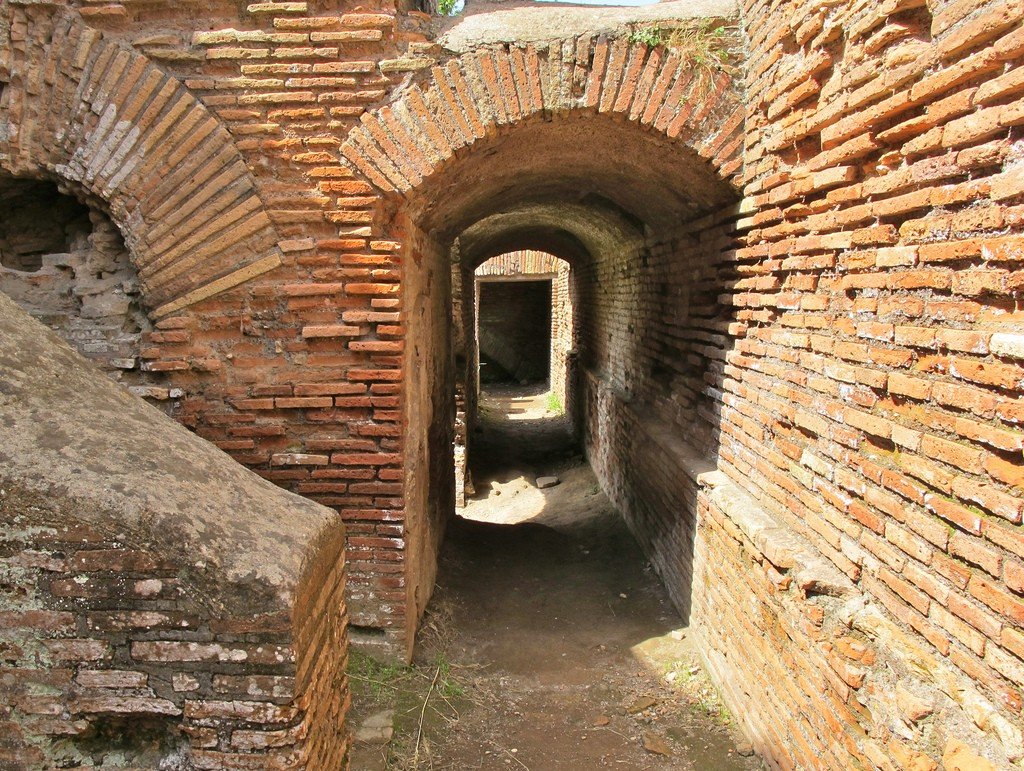
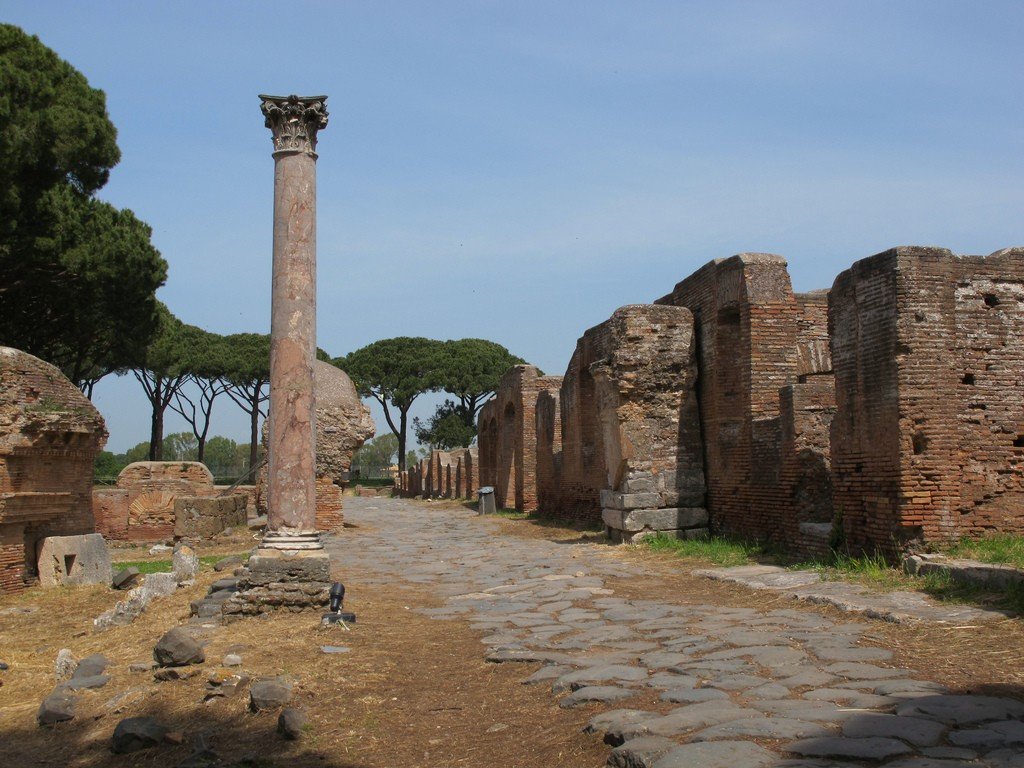
General Information
Around 450 BC, Ostia was a military outpost in the delta of the Tiber River at its confluence with the Tyrrhenian Sea. As Rome grew in size and grandeur, so did the port, gradually becoming a naval base and perhaps the most important trading center of the Roman Empire. When navigation along the Tiber became impossible, Ostia was simply abandoned.
.
At its peak, Ostia was a thriving commercial center with a population of over 100,000 people – the dwellings, taverns, groceries and thermae are still intact. The main street – Decumanus Maximus, more than 2 km long, here you can still see the deep ruts left by four-wheeled carts that delivered goods and various cargoes from Rome to the sea and back.
.Tourists are free to wander around the city. One can admire the marvelous mosaics and columns, but the real sights are the domestic details, such as the marble slab for cutting fish in the fish shop. Behind the theater, where performances attracting 3,500 spectators took place in the summer, is a forum with a temple of Ceres in the center. In addition to the temples, thermae, and majestic squares, you can explore the ruins of poor people’s houses and familiarize yourself with the typical street layout, as well as look in the shops – in other words, become an ancient Roman for a day!
.The excavations of Ostia Antica
Streets among the tombs
As soon as you set foot in the excavation area, in front of the Porta Romana gate, you can see long rows of tombs from the times of the Republic along the ancient Via Ostiensis and Via delle Tombe. Beyond the Porta Romana gate, the main of the three city gates, begins Decumanus maximus, the main street of ancient Ostia – over 1 km long. To the left of Piazzale della Vittorio, named after the statue of Minerva Victoria, the ruins of a warehouse from the 1st century BC have been discovered. Then comes the Thermae of Neptune with a beautiful mosaic in the lobby depicting the god of the sea surrounded by fish and other animals. Here you can get a good look at the heating system of the baths (in the northeast corner). From the terrace there is an excellent view of the entire excavation area. Further north is the barracks of the Vigiles, the centuria and fire department.
.Theater
If one walks further along Decumanus, after the Thermae, one discovers a theater from the time of Augustus, enlarged under Septimius Severus; it had a seating capacity of about 2,700 spectators. From the top of the upper rows of steps-seats one has a view of the excavations, especially of the Piazzale delle Corporazioni with the columns of the Temple of Ceres in the center. This square was once the business center of Austin: the porticoes around it housed seventy merchants’ and changers’ offices, each portico decorated with mosaics, in most cases depicting the occupation of the owner and the goods with which the office dealt. These were establishments that mediated trade with overseas lands. The well-preserved shrine to the Persian deity Mithras next to the theater belongs to the dwelling house of Marcus Apuleius Marcellus, built on the Pompeian model, with a courtyard-atrium and peristyle. Further along Decumanus are four small temples of the 2nd century BC, adjoined by a large warehouse. On Via della Casa di Diana to the left is the well-preserved Thermopolium, a wine shop with a counter made of stones.
.Capitol Forum
At the intersection of Decumanus maximus and Cardo maximus once stood the Forum, the religious and political center of the city. Here stands a huge capitol of the II century AD with a wide external staircase – the only fully preserved structure of Ostia. The brick-based building was originally lined with marble. Under Emperor Trajan, a curia was erected and a basilica, where the court met, was built opposite it. On the south side of the Forum was a temple of Rome and Augustus with a statue of victorious Rome. The thermae on the southeast side of the Forum are the largest in the city. West of the capitol you can see the Noggea Erogathiana, an impressively sized warehouse with beautiful gates and a two-tiered courtyard with arcades. In the same alley, in the house of “Cupid and Psyche”, a typical residential house with an inner courtyard, the marble floor has been preserved and is worth seeing. Nearby on Via della Foce are the “thermae of the seven sages” with a beautiful mosaic floor in the domed hall. The mosaics depict hunters and animals. Next to the thermae you can see the remains of a multi-storey apartment building insula, the so-called House of the Charioteers.
.Basilica, Scola Traiana
Moving further along Decumanus maximus, on the right you will find first the basilica of the 4th century – the only Christian church discovered in Ostia to date – and aslant opposite -Skola di Traiano (Schola di Traiano, 2nd-3rd century AD) – a house where shipbuilders held meetings – so named by archaeologists only because a statue of Emperor Trajan was found there. There used to be dwelling houses, of which a peristyle with a nymphaeum in the southeast corner remains. This is followed by a group of houses 108 meters long called “della Fontana a Lucerna”. The first floors were a continuous chain of benches. Opposite is a complex of houses grouped around gardens. Judging from the mosaics and heated bathrooms, these were houses for the rich. Decumanus maximus ends at the gate of the Porta Marina.
.Theater in Ostia Antica
During the summer, the Ostia Antica Theater hosts a variety of dramatic, musical, and cinematic performances. Festival Internazionale di Ostia Antica takes place until the end of June, and Teatro di Roma tours in July and August.
.Inquiries
Via Rosa Raimondi Garibaldi 7 00145 Rom;Tel: 06 5 16 81;Fax: 06 51 68 41 34;www.ostiaonline.it/turismo.htm
.